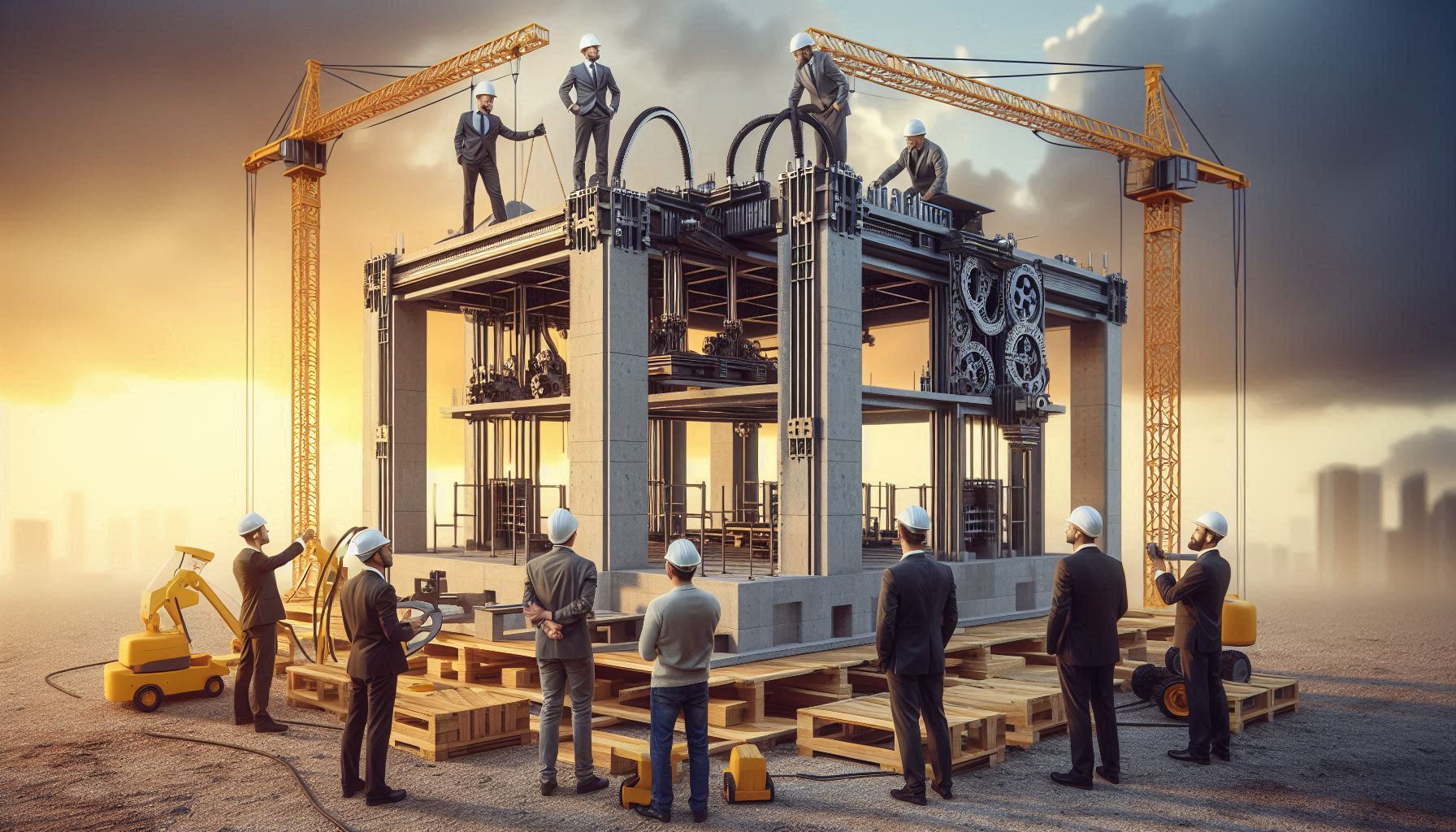Introduction to Robotics in Construction
The construction industry is on the cusp of a revolution. As technology advances, robots are stepping onto job sites, ready to reshape how we build our world. Imagine towering skyscrapers rising faster than ever before or intricate bridges constructed with precise automation. This isn’t just a vision for the future; it’s happening right now.
Robotics in construction merges innovation with efficiency, promising to tackle some of the industry’s biggest challenges. From labor shortages to safety concerns, these machines offer solutions that can transform traditional building practices. Curious about how robotics will redefine our skylines and infrastructure? Let’s explore this exciting intersection of technology and construction as we delve into its advantages, various types of robots at work today, inspiring case studies, and what lies ahead for this groundbreaking field.
Advantages of Using Robotics in Construction
 Robotics in construction brings a wealth of benefits to the industry. One significant advantage is enhanced efficiency. Robots can operate continuously without fatigue, completing tasks at a faster rate than human workers.
Robotics in construction brings a wealth of benefits to the industry. One significant advantage is enhanced efficiency. Robots can operate continuously without fatigue, completing tasks at a faster rate than human workers.
Safety is another major factor. Dangerous jobs, such as working at heights or handling heavy materials, can be delegated to robots. This reduces the risk of injuries on site.
Precision and accuracy are improved with robotic technology. Automated machines minimize human error, ensuring structures meet strict specifications and quality standards.
Cost savings also play a vital role. While initial investments might be high, robotics reduce labor costs over time and increase productivity through quicker project completion.
Sustainability benefits arise from optimized material usage and reduced waste production during construction processes. As projects become more eco-friendly, robotics will contribute significantly to environmental goals in the industry.
Types of Robots Used in Construction
 Construction sites are becoming increasingly populated with various types of robots designed to enhance efficiency and safety. One prominent type is the autonomous drone, often used for surveying and mapping. These flying robots can quickly gather data from hard-to-reach areas, helping teams make informed decisions.
Construction sites are becoming increasingly populated with various types of robots designed to enhance efficiency and safety. One prominent type is the autonomous drone, often used for surveying and mapping. These flying robots can quickly gather data from hard-to-reach areas, helping teams make informed decisions.
Another essential player in this field is the robotic arm. Found on many construction sites, these arms can handle heavy materials and perform precise tasks like welding or bricklaying. They reduce human error and streamline processes.
Exoskeletons have also emerged as a groundbreaking innovation. By supporting workers’ movements, they help prevent fatigue and injuries during physically demanding tasks.
Mobile robots navigate job sites autonomously to transport materials or tools between locations. This not only saves time but also minimizes the risk of accidents associated with manual transportation methods. Each robot serves a unique purpose that contributes to building the future of construction efficiently and safely.
Case Studies of Successful Implementation
One notable case study is the use of robotic arms by Turner Construction. They implemented robotic technology for tasks like bricklaying, significantly increasing efficiency on site. The robots handled repetitive tasks with precision, reducing labor costs and errors.
Another impressive example comes from Skanska’s partnership with Built Robotics. Their autonomous bulldozers transformed how earthmoving is done at construction sites. This innovation allowed for continuous operation without downtime, speeding up project timelines.
A smaller-scale but equally impactful case involved a startup called Apis Cor. They used 3D printing technology to construct an entire house in just 24 hours. This groundbreaking approach demonstrated not only speed but also sustainability through reduced waste.
These instances highlight the tangible benefits that robotics can bring to construction projects across various scales and complexities.
Challenges and Limitations of Robotics in Construction
Robotics in construction is not without its hurdles. One significant challenge lies in the high initial investment costs. Many companies hesitate to adopt advanced robotic systems due to budget constraints.
Additionally, the integration of robotics with existing workflows can be complicated. Construction sites are often dynamic environments, requiring seamless coordination between various teams and machines.
Another limitation involves the technology itself. While robots excel at repetitive tasks, they struggle with complex decision-making scenarios that require human intuition and adaptability.
Furthermore, skilled labor shortages persist despite technological advancements. The need for operators who understand both robotics and traditional construction methods complicates training efforts.
Regulatory frameworks lag behind innovation in this field. Safety standards and guidelines must evolve to accommodate new robotic technologies effectively.
The Future of Robotics in the Construction Industry
The future of robotics in the construction industry is bright and full of potential. As technology advances, we can expect robots to take on more complex tasks with greater precision.
Imagine autonomous drones surveying job sites from above or robotic arms assembling intricate structures. These innovations will not only speed up construction but also enhance safety by reducing human risk in hazardous environments.
Integration of artificial intelligence will lead to smarter machines that learn from their surroundings. This evolution means increased efficiency and adaptability on-site, allowing for customized solutions tailored to specific projects.
Collaboration between humans and robots will redefine roles within teams. Workers may focus on higher-level planning while robots handle repetitive, labor-intensive tasks, creating a more dynamic workflow.
As costs decrease and capabilities expand, the adoption rate of robotics is set to surge. The transformation won’t just be about building faster; it’s about reshaping how we approach construction altogether.
Conclusion
Robotics is transforming the construction industry in ways we once only dreamed of. With increased efficiency and enhanced safety, these technologies are paving the way for a new era in building practices. As various types of robots become more integrated into workflows, their ability to tackle complex tasks continues to grow.
Real-world examples showcase how companies successfully leverage robotics for improved outcomes. Yet it’s essential to acknowledge that challenges do exist, from high initial costs to potential job displacement concerns.
Looking ahead, as technology advances and public perception shifts, robotics will likely play an even larger role in shaping our built environment. The future of construction is not just about bricks and mortar; it’s about innovation and progress driven by robotic solutions. Embracing this shift could redefine what it means to build effectively and sustainably.










